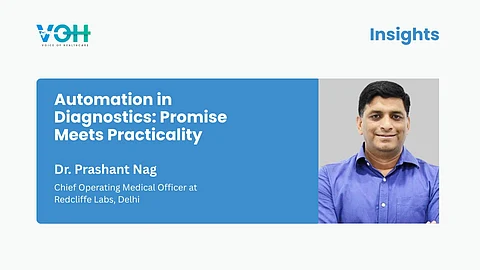

As diagnostic laboratories strive to meet the evolving demands of modern healthcare, automation emerges as both a transformative opportunity and a complex challenge. While it offers enhanced scalability, precision, and efficiency, successful implementation requires strategic foresight, seamless integration, and adaptive leadership.
In high-volume labs, AI-driven systems are revolutionizing quality control by enabling real-time, data-based monitoring. Machine learning algorithms can detect early signs of instrument drift, reagent degradation, or abnormal test patterns. Combined with robotic sample handling, barcode tracking, and automated reporting, these systems improve turnaround times and minimize human error. AI further enables predictive scheduling and early identification of workflow bottlenecks.
However, maintaining consistent quality assurance remains a major hurdle. Automation must be contextualized with clinical insights and strict adherence to protocols. While the analytic phase is often highly automated, the pre- and post-analytic stages—such as sample collection, labelling, and result interpretation—still rely heavily on human intervention. Such fragmentation can create workflow bottlenecks and compromise efficiency.
Financial and infrastructural limitations also impede progress. Total Laboratory Automation (TLA) systems require significant capital investment, ongoing maintenance, and specialized technical expertise. For many institutions, especially those in resource-limited settings, these barriers slow the pace of adoption.
Human factors are equally critical. Staffing shortages and resistance to change remain persistent issues. As automation reshapes job roles, laboratories must invest in upskilling their teams to ensure smooth transitions. The 2025 Laboratory Leadership Report highlights that 38% of lab leaders view staffing shortages as their greatest challenge, emphasizing the need for strategic workforce planning.
Standardization across multi-site networks presents another critical concern. Variability in equipment, protocols, procedures, and data systems can hinder consistency and regulatory compliance. Achieving true interoperability requires not only technological solutions but also robust governance frameworks.
Finally, there is a risk of over-reliance on automation, which may erode critical thinking and diagnostic intuition. While machines excel at repetitive tasks, human oversight remains indispensable for nuanced decision-making and anomaly detection.³
In conclusion, automation in diagnostics is not a plug-and-play solution but a strategic and transformative journey. Its success depends on harmonizing technology with human expertise, aligning infrastructure with strategy, and balancing innovation with empathy.